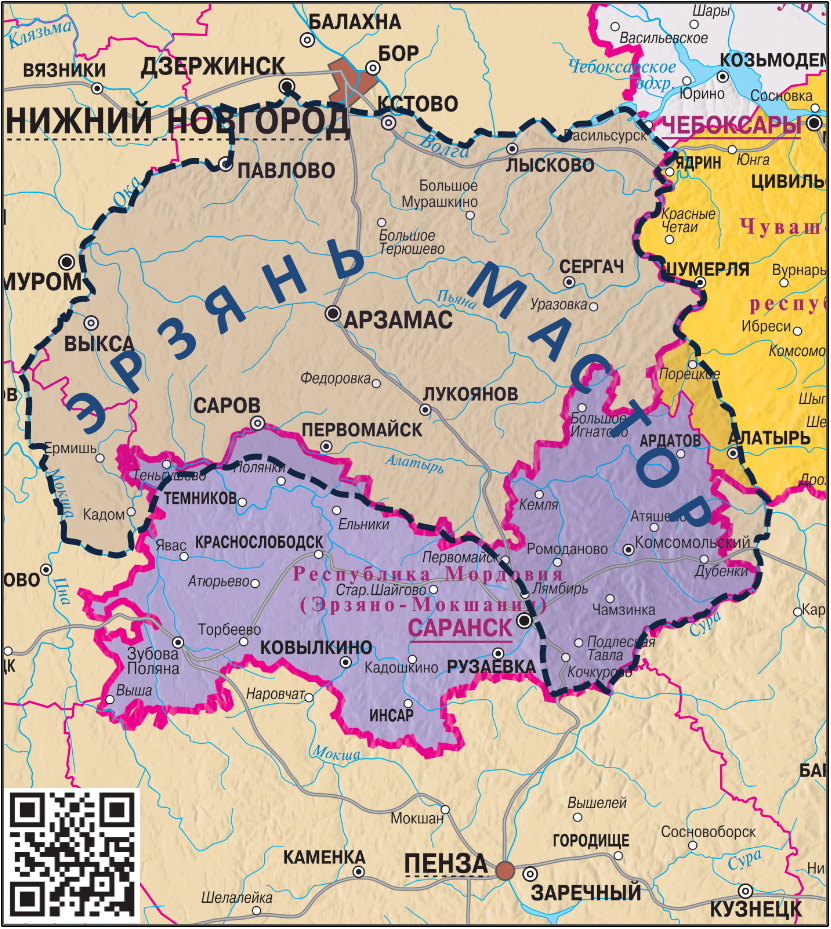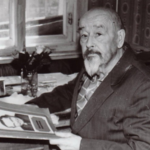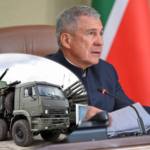Erzyan Mastor

Erzyan Mastor is a historical motherland of Erzyan people, once a unified country, compactly located between Volga, Oka, Moksha and Sura rivers. Today it is southern part of the Nizhegorod Oblast and eastern part of the Republic of Mordovia, and small adjoining territories of nearby regions. Ethnogenesis of Erzyan people started here, as evidenced by ancient settlements, sacred sites and burial grounds.
History tells us about a medieval Erzyan state. At the beginning of XIII century Inäzor Purgaz, prominent Erzyan ruler, governed here. Western neighbors left mentions about this country as about the “Volost of Purgaz”. Purgaz successfully resisted to expansion of nearby principalities, based at Nizhny Novgorod; later the Inäzor led resistance to the Mongol. The Golden Horde captured Erzyan Mastor as well as other countries of the region. Further, the Golden Horde disintegrated into separate khanates and beyliks. Establishment of Moscovite rule in XVI century caused active Christianization processes, together with violent Russification and ethnocide of Erzyan people.
Russian domination resulted in assimilation and dispersion of Erzyans. Violent Christianization eliminated centuries-old ethnical, cultural and religious identity of native people, paving the way to language Russification and almost complete ethnic assimilation among Russian colonists. Erzyans tried to organize rebellions in order to protect faith of ancestors; however, each time resistance movement was cruelly repressed by tsar’s repressive machinery. After one of revolts, tsar’s government forbade Erzyans to hunt, to carry weapons, to engage in blacksmithing. For two hundred years, Erzyans did not have any forges, however, as well as nearby native peoples, oppressed by Russian occupants.
Tyranny of the Orthodox church of Moscow patriarchate as well as civil authorities resulted in mass migration of representatives of native peoples outside Erzyan Mastor. So Erzyan settlements appeared in Penza, Saratov and Ulyanovsk oblasts, and in Zavolzhye (Samara and Orenburg oblasts, Tatarstan, Bashkortostan). The number of those Erzyans, who succeeded in saving national identity on new territories, eventually exceeded number of those remaining on the native lands. Particularly regrettable perspective of cruel Russification can be seen in the Nizhegorod Oblast, where Arzamas (Erzyamas) city, the historical capital of Erzyan Mastor, is located.
Because of assimilation and migrations, Erzyan people lost territory of their compact settling, forming an agglomeration of ethnic enclaves up to Ural. That is why, when a question arised about creation of a national district, it was not a simple business to define its exact borders. Bolsheviks decided to unite large natural habitat areas of Erzya and Moksha, by old Russian pattern considering them as one “Mordva” people. As a result, the Mordovian national district, partly including native lands of Erzyan Mastor, appeared in 1928. Later it was transformed into an autonomous oblast and autonomous republic. Nowadays Erzyans and Mokshans in Mordovia together constitute only 40% from total population, while being exposed to further Russification already in their own republic.


Leave a Reply